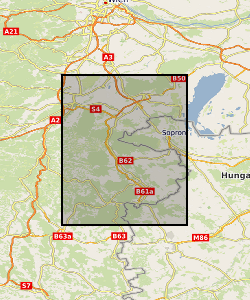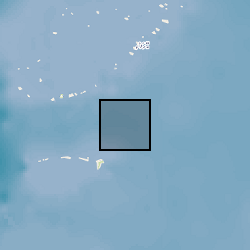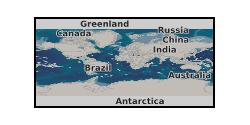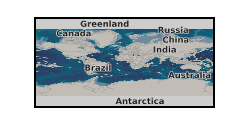Miocene
Type of resources
Available actions
Topics
Keywords
Contact for the resource
Provided by
Years
Formats
Representation types
Update frequencies
-

Element maps from 5x 10 cm sections generated using the Zeiss Sigma HD Field Emission Gun Analytical SEM at Cardiff University. Maps come from sections within the early Miocene pelagic interval situated directly below the Nicobar Fan succession at IODP Site U1480 in the Eastern Equatorial Indian Ocean (for more information see published report, https://doi.org/10.1016/j.epsl.2017.07.019). These specific sections were chosen to examine the depositional environments associated with transitions from red clays to white chalk, which demonstrate distinct banding at the micro and macro scale.
-

Stable isotope data of organic carbon, nitrogen and sulfur as well as trace elements are used to explore how proxies with differing residence times in seawater respond to changes in the basin’s connectivity to the open ocean. The results show that species with a short residence time, such as nitrate and rare earth elements, may be more sensitive to geologically brief fluctuations in oceanographic conditions than long-lived species like sulfate. Details about the methodology and sampling strategy can be found in Stu¨eken, E.E., Viehmann, S. and Hohl, S.V., 2023, ACS Earth and Space Chemistry, 7(7), pp.1337-1349.
-

Middle Miocene terrestrial climate reconstructions from fossil plant remains. 197 sites are reconstructed from across the globe. These are presented with latitude-longitude co-ordinates (both modern and palaeo), published minimum and maximum ages of each site and a 1/0 column to denote those sites relating to the mid Miocene climatic optimum. Reconstructed variables are: bio1 (mean annual temperature in °C), bio8 (mean temperature of the wettest quarter in °C), bio10 (mean temperature of the warmest quarter in °C), bio11 (mean temperature of the coldest quarter in °C), bio12 (mean annual precipitation in mm), bio14 (Precipitation of Driest Month in mm), bio17 (Precipitation of Driest Quarter in mm), bio18 (Precipitation of Warmest Quarter in mm) and bio19 (Precipitation of coldest Quarter in mm). bios are presented as an optima with 0.5 and 0.95 uncertainty
-

Count data (original counts and percentage abundances) from nannofossil assemblage analysis of Early Miocene samples. These form the prime data for a paper submitted to Palaeogeography, Palaeoclimatology, Palaeoecology (Young et al. submitted, 2019).
-

Data derived from NERC Grant NE/N001621/1. Geographical Area - DSDP/ODP/IODP Sites 516, 1138, 925, 242, 1338, 871, 872
-

We report sedimentary coatings and fish teeth neodymium isotope values – tracers for water-mass mixing – from deep-water International Ocean Discovery Program (IODP) Site U1438 (4.7 km water depth) in the Philippine Sea, northwest Pacific Ocean. The time period encompasses the last 20 million years.
-

This dataset comprises 40Ar/39Ar dated detrital hornblende grains for 5 samples from IODP Expedition 374 Site U1521 to the Ross Sea, collected on the RV JOIDES Resolution. Shipboard biostratigraphy and magnetostratigraphy suggests the samples are early Miocene in age (McKay et al., 2019, Proceedings of the International Ocean Discovery Program). These data can be compared to terrestrial geochronological data, allowing the changing provenance of the sediments to be traced.
-

Mg/Ca in multiple species of planktonic foraminifera from five time slices since the Middle Miocene to present (target ages 15, 12.5, 10, 7.5, 4.5, 2.5 and 0 Ma). These samples are from a range of globally and latitudinally distributed DSDP (Deep Sea Drilling Program), ODP (Ocean Drilling Program), IODP (International Ocean Discovery Program) open ocean sites. From low to high latitudes these are: Site U1338, U1489 (Eastern and Western Equatorial Pacific), Sites 871, 872, and Site U1490, (Western Tropical Pacific), Site 242 (Mozambique Channel, Indian Ocean), U1482 (Australian Continental Margin), Site 516 (Western Atlantic Ocean), Site 1138 (Kerguelen Plateau, Southern Ocean). The Mg/Ca ratios were measured using Inductively coupled mass spectrometry (ICP-MS) at Cardiff University between December 2018 and June 2019. The data were collected to explore Mg/Ca values for modern and extinct species at different intervals of time (which were different climatically) and at different geographical locations. This data was collected by E.Mawbey as part of a project funded by NERC (Q10 project) to investigate changes in foraminiferal depth habitat in response to different climate conditions.
-

This dataset comprises 35 samples analysed for clay mineralogy from IODP Expedition 374 Site U1521 to the Ross Sea, collected on the RV JOIDES Resolution. Shipboard biostratigraphy and magnetostratigraphy suggests the samples are mainly early Miocene in age (McKay et al., 2019, Proceedings of the International Ocean Discovery Program). The uppermost samples do, however, include younger Plio-Pleistocene sediments.
 NERC Data Catalogue Service
NERC Data Catalogue Service